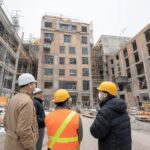- Home
- Articles
- Architectural Portfolio
- Architectral Presentation
- Inspirational Stories
- Architecture News
- Visualization
- BIM Industry
- Facade Design
- Parametric Design
- Career
- Landscape Architecture
- Construction
- Artificial Intelligence
- Sketching
- Design Softwares
- Diagrams
- Writing
- Architectural Tips
- Sustainability
- Courses
- Concept
- Technology
- History & Heritage
- Future of Architecture
- Guides & How-To
- Art & Culture
- Projects
- Interior Design
- Competitions
- Jobs
- Store
- Tools
- More
- Home
- Articles
- Architectural Portfolio
- Architectral Presentation
- Inspirational Stories
- Architecture News
- Visualization
- BIM Industry
- Facade Design
- Parametric Design
- Career
- Landscape Architecture
- Construction
- Artificial Intelligence
- Sketching
- Design Softwares
- Diagrams
- Writing
- Architectural Tips
- Sustainability
- Courses
- Concept
- Technology
- History & Heritage
- Future of Architecture
- Guides & How-To
- Art & Culture
- Projects
- Interior Design
- Competitions
- Jobs
- Store
- Tools
- More
What to Expect from a Comprehensive Building Review

Walk through an older building and the clues often hide in plain sight. A door that sticks, a thin crack near a beam, or a patch of moisture near a roof joint can show slow changes that most people pass by without concern. Architects, students, and owners pay close attention to these signs because small shifts can point to larger issues.
During a purchase or renovation, those small signs raise more pointed questions. People want to know whether a truss has moved, whether moisture has reached framing, or whether a tired service panel is still safe. Early in the review process, many turn to experienced teams that offer Certified Home & Property Inspection Services. Schembri Engineers provides these services across Arizona, combining clear reporting with steady structural insight so owners know what needs routine care and what needs engineering review.
Table of Contents
ToggleHow Detailed Reviews Support Better Decisions
A full building review gives a clear view of how the structure is working under everyday use. Inspectors move through each area, record visible wear, and outline where items fall short of expected performance. Their notes help architects and students compare planned details with real outcomes. They also help owners plan maintenance instead of reacting to sudden failures.

Many building issues develop quietly. A slight floor slope may expand over time, or a roof truss may shift because of moisture or past repair work. A skilled inspector looks for these early signs and ties each one to likely causes. This kind of report gives everyone involved a shared factual base, which reduces confusion during later design or repair work.
Regulators and lenders rely on this record as well. Public building safety programs show how housing quality checks support safe occupancy and long term upkeep. Their guidance stresses the need to document hazards, structural wear, and service issues so repairs can be prioritized with clear reasoning.
This approach helps project teams decide which issues need quick correction and which issues require engineering input before any work starts. It brings clarity to owners who want to protect long term value without rushing into repairs.
What Inspectors Look For During a Comprehensive Review
Most full reviews follow a consistent structure. Inspectors begin with the foundation and load paths, then move through framing, roofs, walls, and floors. Each step aims to separate surface level wear from signs of structural concern.
Key areas often covered include:
- Foundation and settlement
Inspectors look for soil movement, moisture entry, slab cracks, and wall shifts. Early settlement may need simple monitoring, while wider cracks or leaning walls can call for more detailed engineering checks. - Framing and structural support
Wood framing, trusses, steel columns, and beams are checked for sagging, blocked ventilation, corrosion, or past repairs. In homes and small buildings, truss cracks or cut members draw the most attention because they can affect safety if left untreated. - Roof and exterior envelope
The inspector checks flashing, shingles, drainage, and surface wear. Water entry patterns help locate weakness in the envelope. Consistent moisture findings may signal problems that reach framing or insulation. - Electrical, plumbing, and mechanical systems
Service panels, breakers, pipe joints, vents, and equipment are reviewed for visible damage, outdated parts, or safety hazards. A building can pass basic safety checks yet still need upgrades to support current loads or new equipment.

Building managers often use checklists to track these items year after year. The National Park Service provides public inspection checklists that help managers record structural, moisture, and service issues across large properties. These tools show how systematic checks reduce missed hazards when buildings age or change use.
The final review groups findings into clear categories. The first category deals with routine maintenance, such as sealant touch ups, drainage cleaning, or minor surface repairs. The next category highlights hazards, such as structural cracks, unsafe service panels, or roof damage that needs attention soon. The highest category points to issues that require engineering review, testing, or design work before any repairs or upgrades begin.
Why Engineering Perspective Matters After the Review
A good inspection report tells you what is happening, but it does not replace engineering judgment. When the review flags truss cracks, load path concerns, or movement that affects safety, a structural engineer steps in to measure capacity, review loads, and outline repair steps that follow code requirements.
This shift from inspection to engineering is common during home purchases and renovations. Many clients share stories of tight deadlines, unexpected findings, and the pressure to make sound decisions quickly. One Arizona buyer recalled a case where a cracked truss threatened to delay closing. They needed a structural engineer who could assess the issue, set expectations, and explain the repair steps without delay. Clear communication reduced stress for both buyer and seller and kept the process steady.
For architects and students, this stage offers insight into how structures behave once they leave the drawing board. Engineers connect field findings to design choices, which helps students refine their understanding of load paths, material behavior, and long term maintenance. It also helps architects plan better interventions when retrofitting older buildings.

Owners benefit because this step reduces guesswork. Instead of patching cracks or relying on short term fixes, they receive a clear repair plan grounded in engineering principles. That plan may include load calculations, material specifications, or phased repair options that suit the building’s age and condition.
Using Building Review Results To Support Long Term Health
A thorough building review becomes more useful when people know how to apply the findings. The goal is not to create long lists of defects, but to create a path toward safer, more predictable upkeep.
Owners often start by setting repair priorities based on the report categories. Maintenance items are scheduled without hurry, while higher risk items receive faster attention. Any item tied to structural behavior is passed to a qualified engineer so the repair plan protects load paths rather than masking symptoms.
Architects and students use the results to study how real buildings age. Their observations help improve detailing, ventilation, drainage, and material choices on future projects. This benefits both new construction and older building retrofits.
Working with qualified inspectors and engineers, such as those providing certified home and property inspection services, gives owners clarity and reduces long term risk. Thorough reviews make it easier to plan work, protect occupants, and keep structures reliable as they age.
illustrarch is your daily dose of architecture. Leading community designed for all lovers of illustration and #drawing.
Submit your architectural projects
Follow these steps for submission your project. Submission FormLatest Posts
10 Best Outsourced Bookkeeping Services UK 2026
Your in-house bookkeeper costs £35,000 a year. Add software licences, training, holiday...
How Awesome PVC Supplies Improve Building Efficiency Today
PVC products have changed how homes and small buildings save energy. The...
Why a Mortgage Broker Can Secure a Better Home Loan Than Your Bank
Your choice between a mortgage broker and bank can substantially affect your...
Process Server: Role, Requirements, and How to Hire the Right One
Introduction A process server is a neutral professional who delivers legal documents...












Leave a comment